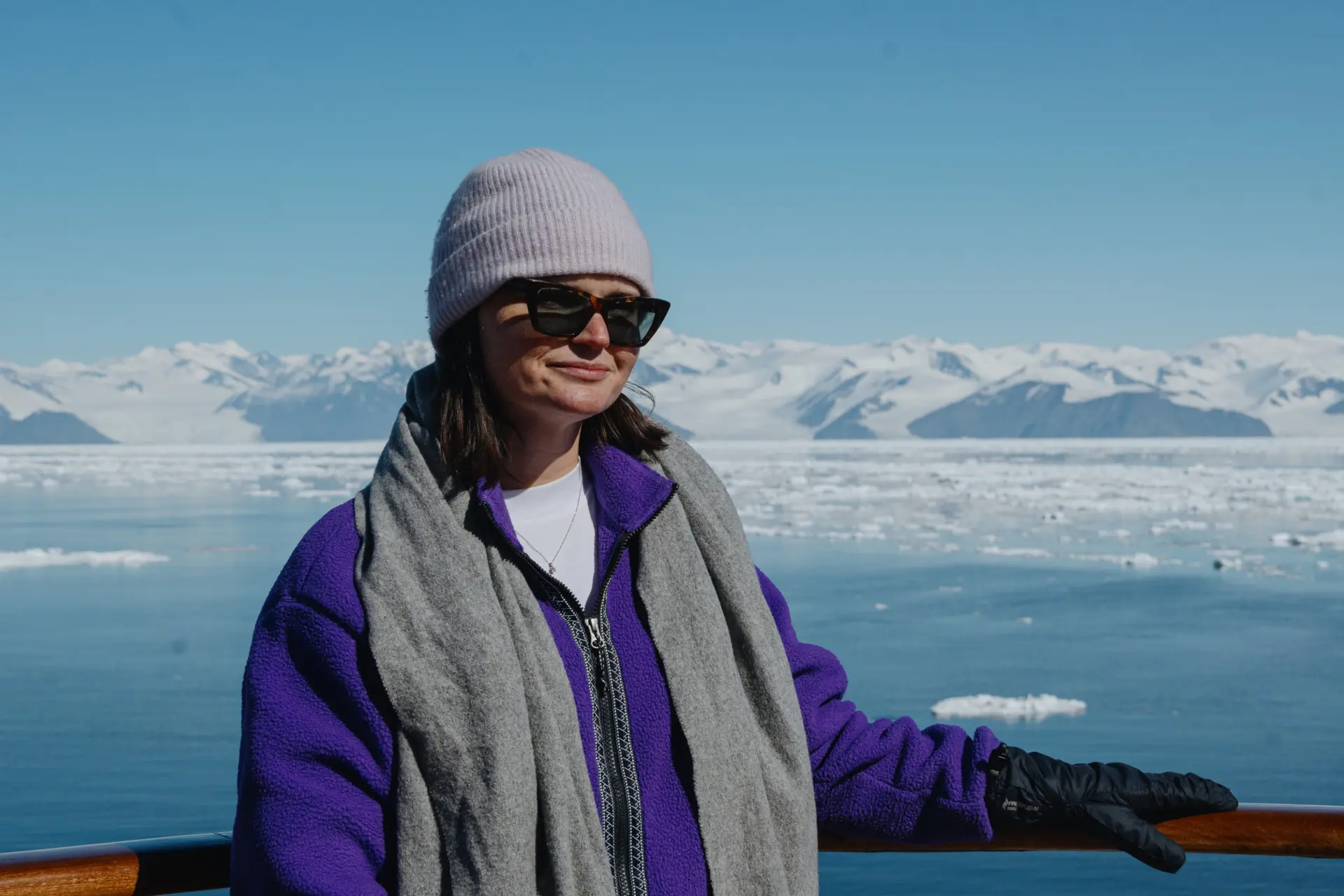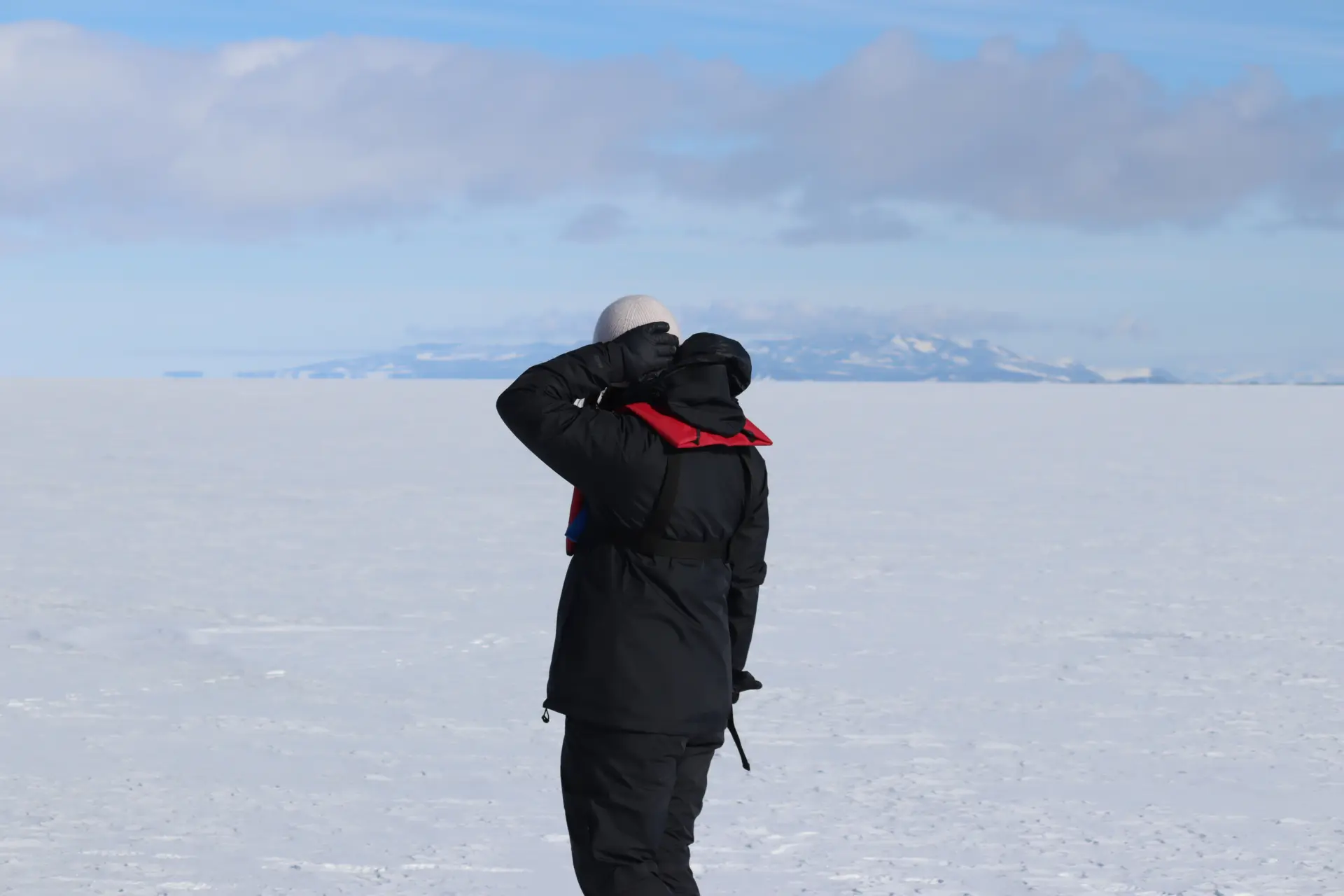Expedition Blog – Lucy Hayes-Stevenson, Ross Sea 2025
Ross Sea Expedition – The Lead-Up
As our departure on 7 January 2025 neared, I felt a mix of anticipation and disbelief. Was this really happening? People kept asking what I expected, but I had none; expectations rarely match reality. This journey was completely unfamiliar. As a heritage architect, I felt a quiet pressure. What if I didn’t connect with the place? Given the significance of this opportunity, the thought lingered, but I was ready to let it unfold.
A Journey to the Unknown
Experiencing an almost untouched environment was unlike anything I’d encountered before. For four days, we were surrounded by the endless horizon of the Southern Ocean, with blue and humpback whales appearing as if to greet us. Out here, we are mere guests in nature’s vast world. Crossing the same waters as the heroic era explorers, our journey took just days, yet the anticipation, disconnection, and slow passage heightened the experience. Watching the ocean for hours, waiting for the next glimpse of a whale, was mesmerising.
Later, our first iceberg appeared – distant shape like a low cloud, slowly revealing deep crevasses. The waves carved into its surface, like an artist shaping a sculpture. Later, we woke to sea ice stretching against the hull, with a crabeater seal resting on drifting ice. Fully disconnected, embraced by history, we caught the smallest glimpse of the isolation those early explorers endured.
Unforgettable Arrival
We approached Cape Adare through glassy waters, surrounded by towering tabular icebergs. They felt like buildings rising from the sea, while Adélie penguins leapt from ice sheets or hitched rides on drifting floes. Ridley Beach was free of snow. Stepping onto the Antarctic continent, emotion hit me instantly – what a privilege. In my journal, I wrote, “I’m not sure I can put today into words.” But I’ll try.
At the hut, the ship’s foghorn suddenly sounded. Within hours, ice had filled the bay. Time felt meaningless under 24-hour daylight. Inside the hut – just 5m x 6m with 10 bunks – it was dark, damp, yet solid. Outside, the timber was pitted but remarkably intact. The ruined Northern Party hut spoke of vulnerability, exposing the harsh reality of survival here.
Rushing back through shifting ice, I felt the power of Antarctica’s ever-changing nature. That night, surrounded by ice, I wondered how life could ever be the same.
Cape Evans: Connecting with History
Cape Evans struck me with its vulnerability—low on the beach, close to the sea, with Mount Erebus looming behind. Scott’s 1910 expedition, his race against Amundsen, and Oates’ last word, “I am just going outside and may be some time”, felt so real. Disconnected for 28 days, these stories weren’t distant history; they were part of our present. Their resilience and sacrifice stayed with me.
Without snow, the site felt exposed. The mutton store revealed skeletal remains, and scattered artefacts, glass, timber, and hessian, spoke of Antarctic life. The anchors from the Aurora, abandoned when the ship was torn from its moorings, were a reminder of Shackleton’s Ross Sea Party’s resilience.
Inside, the hut was dark, with beams of light cutting through, a sharp contrast to the blinding daylight. Seal blubber sat stacked, still dripping oil after a century. Scott’s table stood firm, anchoring memories frozen in place. These places are memorials—silent, powerful, and unforgettable.
Royds Hut: A Place of Resilience
Two days earlier, sea ice had blocked our way to Shackleton’s Hut. We tried again, and as if reminding us who was in charge, Antarctica shifted, the wind changed, and the ice cleared a path. Walking across the frozen sea, each step crunched like salt underfoot.
Approaching Royds, I was struck by its perfect placement—nestled in volcanic terrain beside Pony Lake, with Erebus towering behind, a cloud drifting like smoke. The golden light stretched across the scoria, adding warmth. The energy here was different. Maybe it was Shackleton’s legacy, his resilience, turning back just 180km from the Pole to save his team.
Inside, the worn door threshold held echoes of the past. Rusted panels, sooted timber, and preserved warm wood framed the space. Shackleton’s cubicle was almost bare, just a bunk and canvas walls. Whether by removal or intent, it felt like an act of self-sacrifice. Royds stood strong—enduring, like Shackleton’s legacy.
Reflections: The Impact of Place and Light
Processing the impact of each hut, I’m left questioning what connected me most – the storytelling, the artefacts, context, or the huts themselves. At Adare, I felt isolation and vulnerability; at Evans, loss; and at Royds, comfort and camaraderie. The light levels were strikingly different at each hut: complete darkness at Adare, a spiritual light at Evans, and bright, familiar light at Royds.
I’m grateful to the Antarctic Heritage Trust, Heritage Expeditions, our Inspiring Explorers™ team, Al Fastier, and Cheshire Architects for this opportunity. This experience has left me with a deep personal connection to the historic sites. It has cemented my passion for heritage conservation. I am excited to guide projects to protect the essence of the place and explore how existing buildings can tell meaningful stories.
Lucy Hayes-Stevenson
Inspiring Explorer
Ross Sea Expedition












